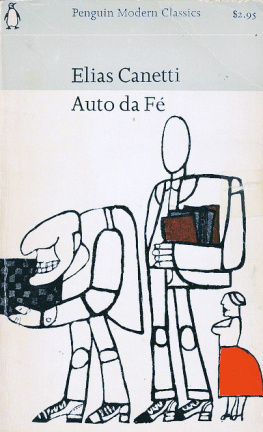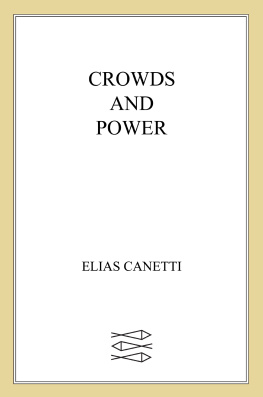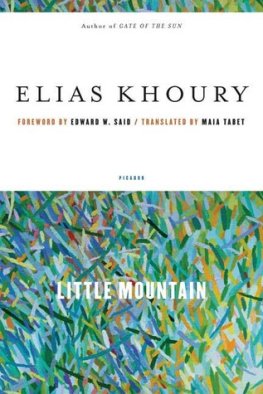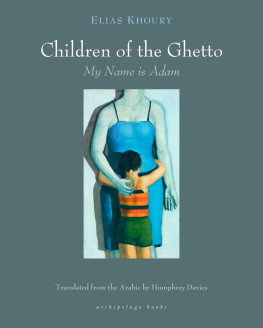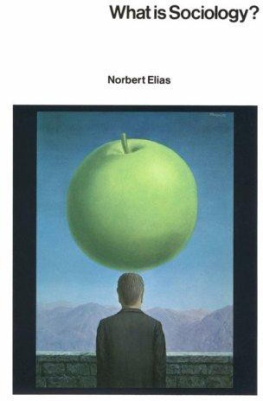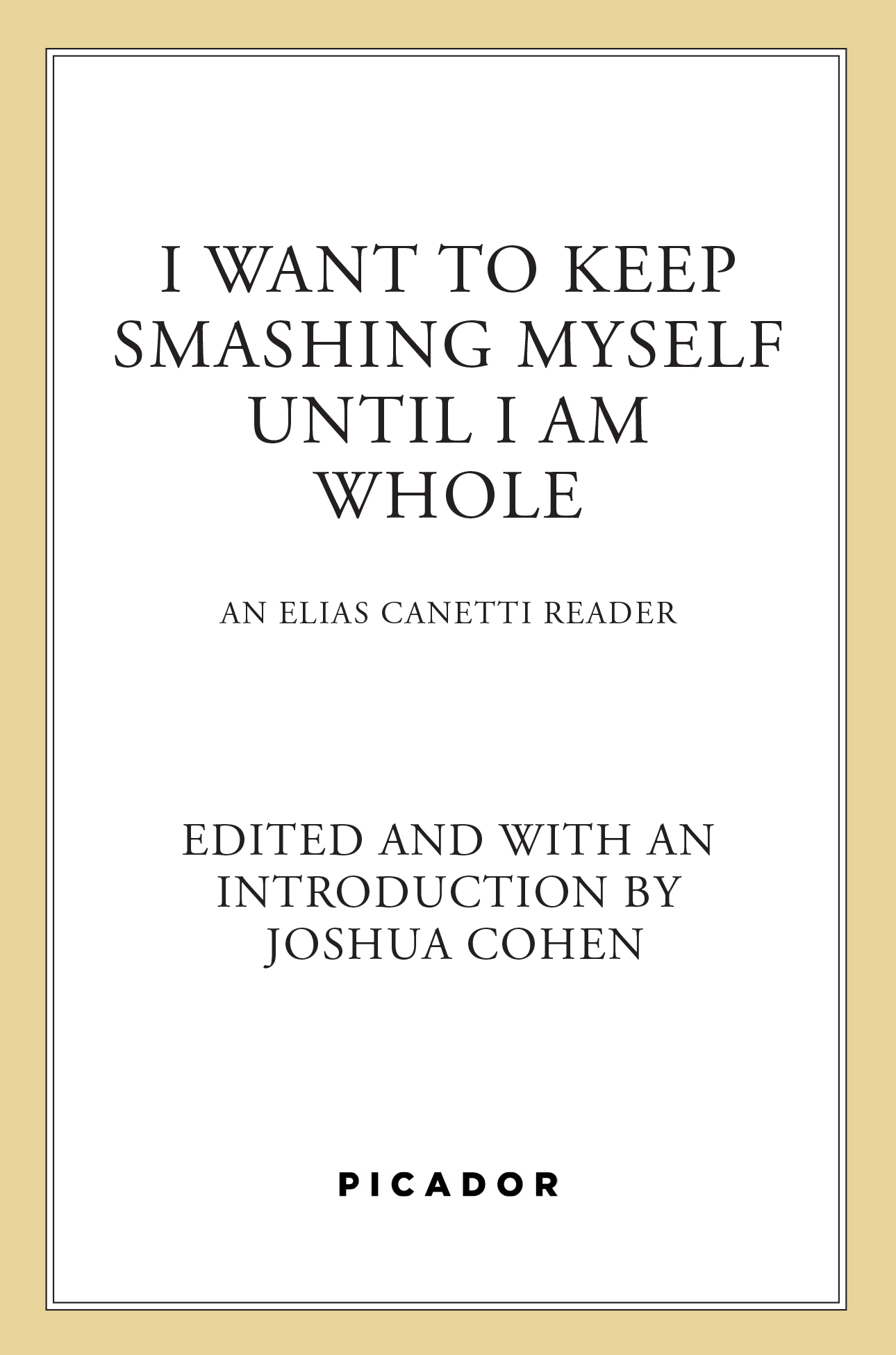Elias Canetti - I Want to Keep Smashing Myself Until I Am Whole: An Elias Canetti Reader
Here you can read online Elias Canetti - I Want to Keep Smashing Myself Until I Am Whole: An Elias Canetti Reader full text of the book (entire story) in english for free. Download pdf and epub, get meaning, cover and reviews about this ebook. year: 2022, publisher: Picador, genre: Non-fiction. Description of the work, (preface) as well as reviews are available. Best literature library LitArk.com created for fans of good reading and offers a wide selection of genres:
Romance novel
Science fiction
Adventure
Detective
Science
History
Home and family
Prose
Art
Politics
Computer
Non-fiction
Religion
Business
Children
Humor
Choose a favorite category and find really read worthwhile books. Enjoy immersion in the world of imagination, feel the emotions of the characters or learn something new for yourself, make an fascinating discovery.

- Book:I Want to Keep Smashing Myself Until I Am Whole: An Elias Canetti Reader
- Author:
- Publisher:Picador
- Genre:
- Year:2022
- Rating:4 / 5
- Favourites:Add to favourites
- Your mark:
I Want to Keep Smashing Myself Until I Am Whole: An Elias Canetti Reader: summary, description and annotation
We offer to read an annotation, description, summary or preface (depends on what the author of the book "I Want to Keep Smashing Myself Until I Am Whole: An Elias Canetti Reader" wrote himself). If you haven't found the necessary information about the book — write in the comments, we will try to find it.
A brilliant selection . . . Canettis range astonishes. Claire Messud, Harpers
A career-spanning collection of writings by the Nobel laureate Elias Canetti, edited and introduced by Pulitzer Prize winner Joshua Cohen.
He embarked on no adventures, he was in no war. He was never in prison, he never killed anyone. He neither won nor lost a fortune. All he ever did was live in this century. But that alone was enough to give his life dimension, both of feeling and of thought.
Here, in his own words, is one of the twentieth centurys foremost chroniclers: a dizzyingly inventive, formally unplaceable, unstoppably peripatetic writer named Elias Canetti, who was awarded the Nobel Prize in Literature in 1981. I Want to Keep Smashing Myself Until I Am Whole is a summa of Canettis life and thought, and the definitive introduction to a writer whose genius for interpreting world-historical changes was matched by a keen sense of wonder and an abiding skepticism about the knowability of the self. Born into a Sephardi Jewish family in Bulgaria, Canetti later lived in Austria, England, and Switzerland while traversing, in writing, the great thematic provinces of his time: politics, identity, mortality, and more. Sourced from Canettis landmark texts, including Crowds and Power, an analysis of authoritarianism and mobs; Auto-da-F, a darkly comic, daringly modernist novel about the fate of European literature; the famous sequence of sensory-titled memoirs, including The Tongue Set Free and The Torch in My Ear; and never-before-translated writings such as the posthumous The Book Against Death, this collection assembles its luminous shards into the fullest portrait yet of Canettis remarkable achievement.
Edited and introduced by Pulitzer Prize winner Joshua Cohen (Book of Numbers, The Netanyahus), I Want to Keep Smashing Myself Until I Am Whole leads us from Canettis polyglot childhood to his mature preoccupations, and his friendships and rivalries with Hermann Broch, James Joyce, Karl Kraus, Thomas Mann, Robert Musil, and others. This collection is also interspersed with aphorisms and diary entries, revealing Canettis formal range and stylistic versatility in flashes of erudition and introspective humor. Throughout, we come to see Canettis restless fascination with the instability of identity as one of the keys to his thoughtas he reminds us, It all depends on this: with whom we confuse ourselves.
Elias Canetti: author's other books
Who wrote I Want to Keep Smashing Myself Until I Am Whole: An Elias Canetti Reader? Find out the surname, the name of the author of the book and a list of all author's works by series.

